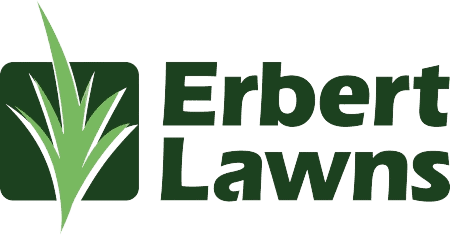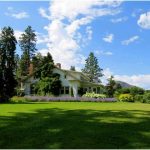Introduction
Have you started to notice unsightly rings in your lush green lawn? This could be a sign of Necrotic Ring Spot (NRS). In this blog we will look into the symptoms, ways to identify, causes, treatments and ways to prevent NRS. We will also explore the best times to treat for NRS which are dependent on whether the disease is active or dormant.
Symptoms of Necrotic Ring Spot
Ring-Shaped Patches
The telltale sign of Necrotic Ring Spot is the brown circular or ring-shaped areas you will see in the lawn. These rings can range from small rings to large circles throughout the lawn.
Browning Grass
The rings you will begin to notice will be shades of brown or tan. They will stand out in contrast to the healthy green grass surrounding them.
Reddish-Brown Centers
Another way to identify NRS is by looking at the center of the affected area. You may begin to notice a reddish-brown hue in the center of the rings.
Thinning or Dead Grass
In the affected areas, the grass will become thin or sparse, it will be weak and eventually die all together. In the affected areas this will result in noticeable bare patches.
White Mycelium Growth
In humid conditions, you might observe white, web-like growth (mycelium) on the affected grass blades. This is a visible sign of the fungal infection responsible for Necrotic Ring Spot.
Ways to Identify Necrotic Ring Spot
There are several ways to initially identify NRS. These will help in being able to accurately identify the disease.
Circular Patches
One of the best ways to identify NRS is by the circular or ring-shaped patterns of browning grass throughout the lawn. These are telltale signs of NRS.
Inspect the Grass
Examine the grass within these rings. If it appears brown, tan, thin, or dead, it’s likely to be Necrotic Ring Spot.
Mycelium Presence
In moist conditions, look for the characteristic white mycelium growth on the grass blades within the affected areas.
Consider the Season
Necrotic Ring Spot is typically active in spring or early summer. This is because conditions tend to be cool and moist.
Soil Test
It’s never a bad idea to check the soil for the pH or nutrient levels. Imbalance can be a cause of developing NRS.
Causes of Necrotic Ring Spot
It is very important to understand the causes and effects of Necrotic Ring Spot. There are several factors that can lead to developing soil disease.
Fungal Pathogen
NRS is primarily caused by the fungus Ophiosphaerella korrae. The roots and thatch of the grass can be infected by this pathogen. Which will then cause the spots or rings to begin to appear in the lawn.
Environmental Conditions
Necrotic Ring Spot thrives in cool, damp conditions. It is most active in spring and early summer when temperatures are moderate, and there is sufficient soil moisture.
Thatch Accumulation
The Necrotic Ring Spot fungus thrives in excessive thatch build up. You will want to make sure you don’t have a thick thatch build up in your lawn. The thatch layer is the area between the grass blades and the soil, typically made up of dead grass and organic matter.
Soil Imbalances
Soil pH imbalances, compaction, or nutrient deficiencies can weaken the grass, making it more susceptible to Necrotic Ring Spot.
Stress Factors
Heavy foot traffic or other forms of stress on the grass can weaken it, making it more vulnerable to fungal infections.
Treatment and Prevention Strategies
There are many ways to effectively treat for Necrotic Ring Spot as well as many ways to prevent NRS.
Treatment Options
Fungicides
There are several different fungicide products that can effectively treat Necrotic Ring Spot. You can reach out to your local lawn care company to help with these treatments. At Erbert Lawns we treat for the disease in both spring and fall.
Liquid Aeration
Liquid aeration can help break down some of thatch build up in the lawn. By doing so this will encourage air circulation to the roots. This makes the environment for NRS less desirable.
Soil Improvement
Regularly test your soil and address any pH or nutrient imbalances. Proper soil management strengthens your grass and reduces its susceptibility to Necrotic Ring Spot.
Prevention Strategies
Choose Resistant Grass Varieties
Fine fescues and perennial ryegrass are less susceptible to Necrotic Ring Spot. If you are trying to establish a lawn or fill the bare spots NRS created, use these types of grass to help fill them in.
Proper Watering
Make sure you are getting most out of your watering. Most would assume that frequent watering would be better suited for a healthy lawn but this is not always the cast. You actually want to less frequently but want to ensure that when you are watering, that you are watering deep into the soil. This will encourage deep roots and reduce the moisture sitting at the surface of the lawn. Surface moisture helps NRS to thrive.
Mow Correctly
When mowing you want to make sure you are maintaining a proper blade height. If you cut the blade too short or too much in one cutting, this will lead to stress in the lawn and weaken the grass as well. When the lawn is stressed or weak, it can then become more susceptible to disease.
Lawn Care
You want to maintain regular care or maintenance in the lawn. This includes regular fertilization, liquid aeration and overseeding. This will help the growth of the lawn and help reduce the risk of NRS.
Limit Traffic
When the lawn is wet for whatever reason, rain or watering, try to eliminate traffic in the lawn. This can lead to soil compaction which is also favorable for Necrotic Ring Spot to develop.
Best Times to Treat and Why
It is important to know when the best times to treat for NRS. You can’t address this disease at any time, there are specific conditions to treat this disease.
Spring and Early Summer
NRS is most active in spring and early summer because the conditions are cool and moist. Treating during this time can be most effective in halting the progression of the disease.
Fall
Apply a fungicide in fall to help your lawn’s resiliency before Necrotic Ring Spot becomes active in spring.
Active Periods and Dormancy of Necrotic Ring Spot
You will need to understand when NRS is active vs. when it is dormant. You will need to know this because this will determine your most effective plan for treatment and prevention.
Active Periods
Necrotic Ring Spot is most active in spring and early summer when temperatures are between
50°F and 75°F. During these times, the fungus thrives in the cool, moist conditions.
Dormant Periods
Once temperatures are about 75°F, you may notice the Necrotic Ring Spot slow down. This is typically when the disease goes into dormancy within the thatch layer. It can remain in the thatch layer waiting for the perfect conditions to become active again. In the winter, you are less likely to see NRS because the ground freezes and the disease is inactive.
Conclusion
Necrotic Ring Spot can appear in the best kept lawns. The importance is in knowing how to identify the disease and the most effective ways of treating it as well. If you are experiencing the possible concern of this disease, you can always reach out to your local lawn care company and they can help develop a treatment plan. You do not want to leave NRS untreated as it can continue to spread throughout the lawn over several years and become rather unsightly. If you need help you can call or text Erbert Lawns at 303-948-6631.

Kelsey Keller
Business Manager
With six years of experience in lawn care, Kelsey Keller has learned the
many facets of what it takes to make lawn green and weed free. She pays close attention to
what customers need and what will make their lawn happy. She continues to learn and discover
what the turfs in Colorado need to be able to thrive.











